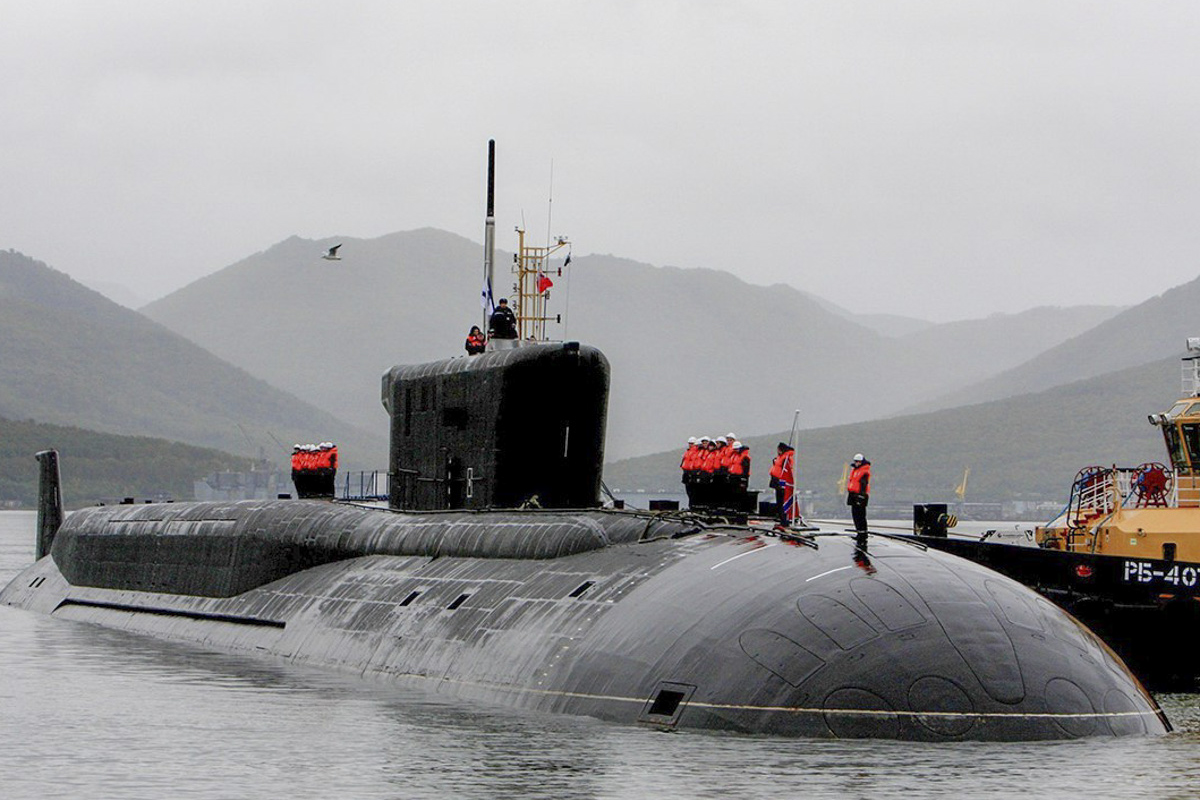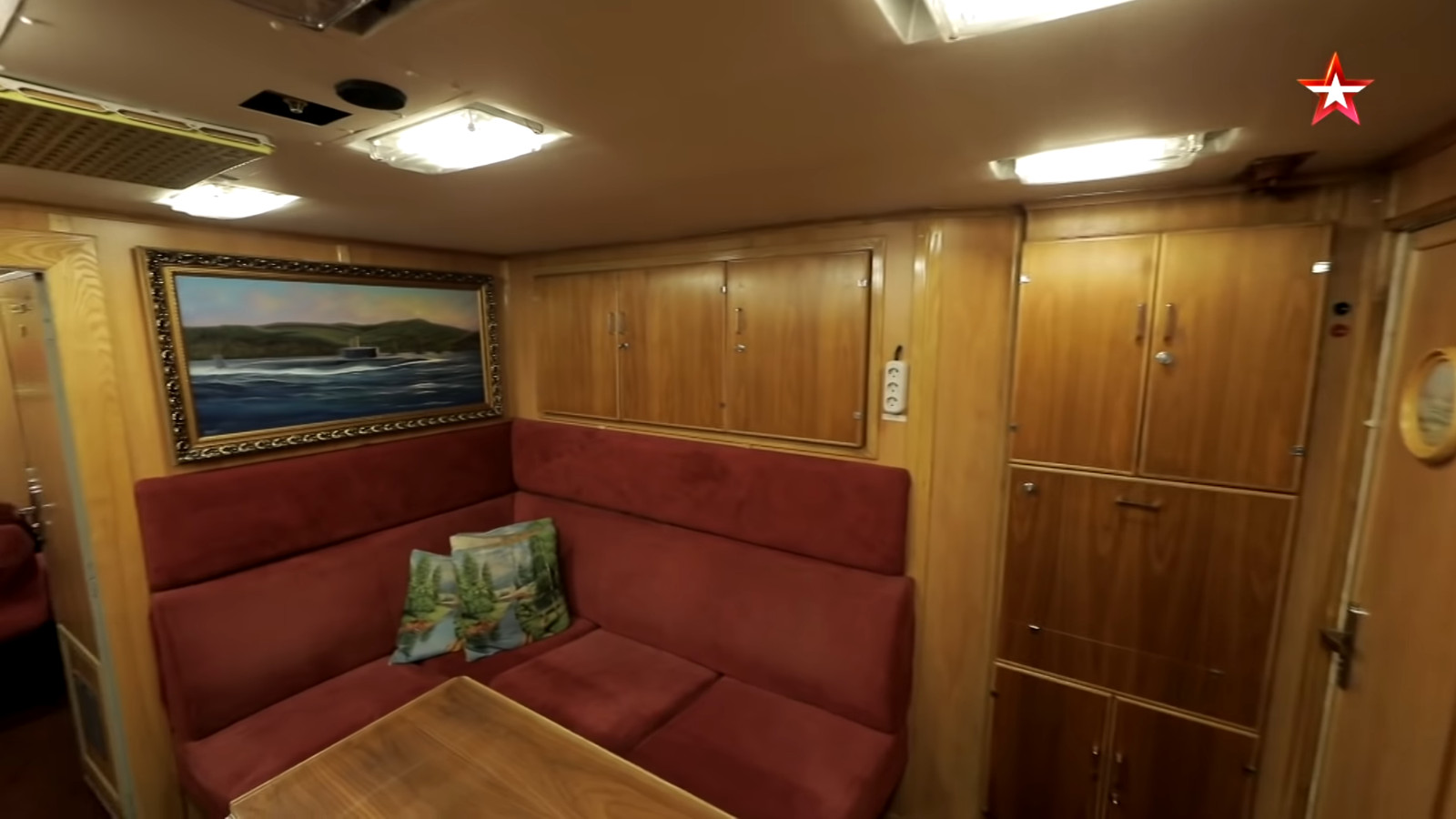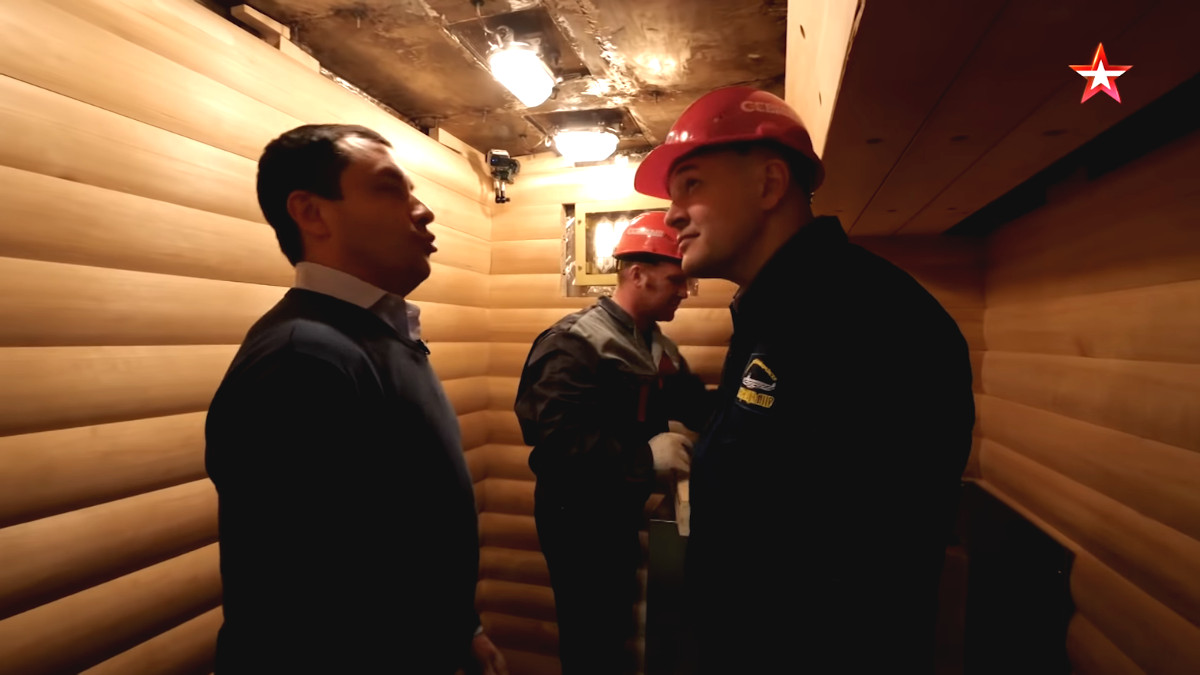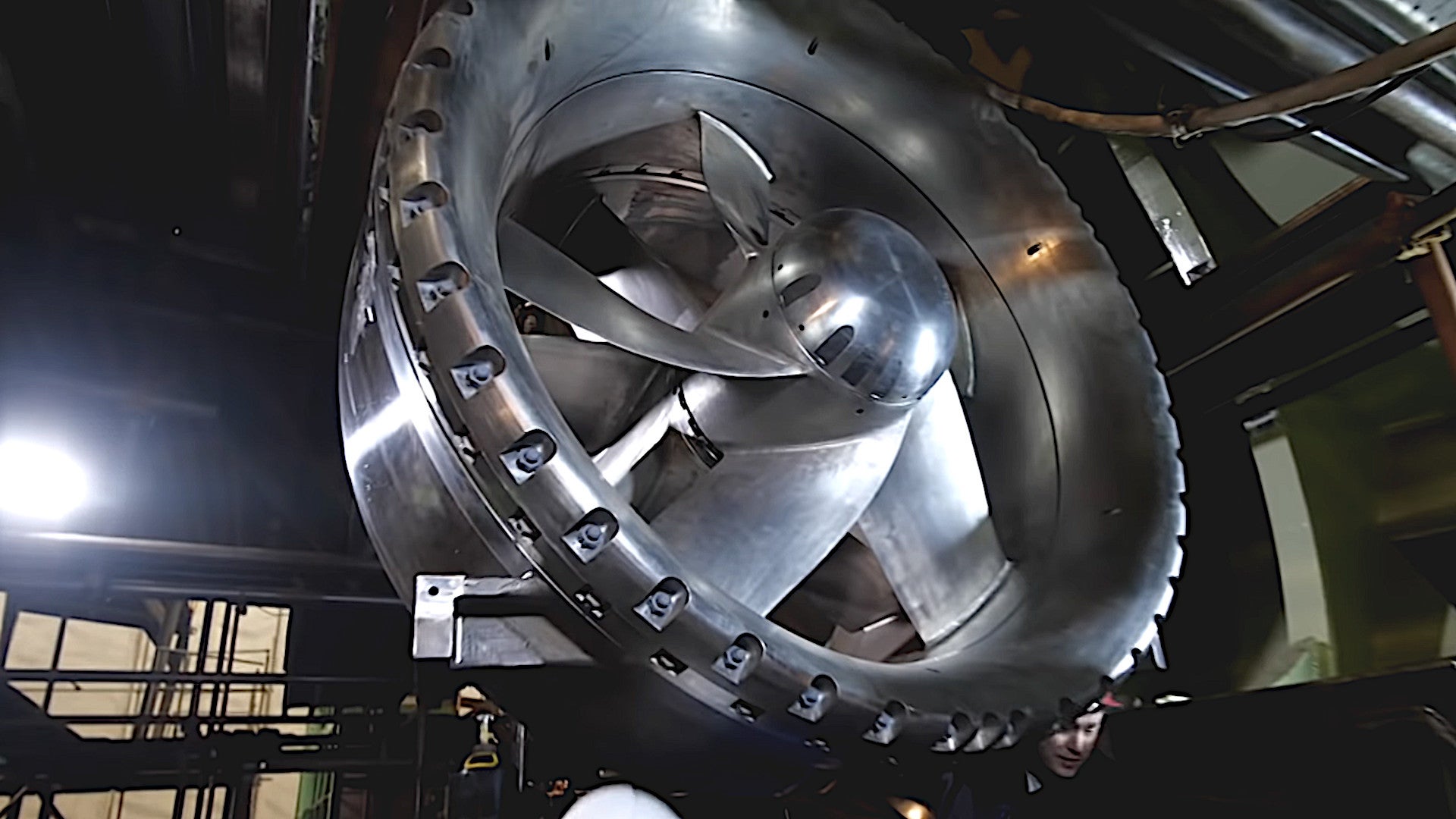A guided tour of sorts of the first of Russia’s nuclear-powered Project 955A Borei-A class ballistic missile submarines, the Knyaz Vladimir, one of the country’s most advanced types, which is in the very final stages of construction, is something that promises to be interesting from the start. With the Russian Navy’s submarine force and its activities being major topics of discussion recently, including within the U.S. government, as well as the public at large, it’s something even more worth watching now.
TV Zvezda, the official television channel of the Russian Ministry of Defense, released a special on the Knyaz Vladimir, which is also known by the hull number K-549, on Mar. 7, 2020. This submarine is the first of the improved Borei-A subclass and has been under construction at the Sevmash shipyard since 2012. It conducted initial sea trails in 2018, followed by a second phase of at-sea testing last year, which included the launch of an RSM-56 Bulava submarine-launched ballistic missile from one of its 16 missile tubes. Unspecified issues have delayed the ship’s commissioning, which is presently scheduled to occur in May. The Russian Navy already has three regular Project 955 Borei class submarines in service.
It’s not clear when TV Zvezda actually shot the footage for the special, but says its the first time any media outlet has been onboard Knyaz Vladimir. The video very clearly shows work continuing on the outside and the inside of the submarine.

TV Zvezda’s reporter similarly gets a look at various features of the boat, inside and out. Among the most interesting segments of the special is a close-up look at one of the submarine’s two auxiliary thrusters.
Veteran U.S. Navy submariner Eric Moreno, a friend of The War Zone and the man behind the Reddit page R/Submarines and the Tac Ops podcast, highlighted on Twitter that the thruster appears to have an advanced type of shrouded propeller. The tips of the blades are welded to ring that rides inside the propeller shroud.
This design would make the thrusters quieter, especially by reducing the noisy cavitation that the tips of the blades would create if they were exposed. This is one of the reasons why enclosed pump-jet propulsors have become increasingly the standard design for the main screws on military submarines, something that veteran U.S. Navy submariner Aaron ‘Jive Turkey’ Amick, another friend of the War Zone, has explained in detail in this past, as you can read about in this previous War Zone piece. He also explains the benefits of shrouded propellers versus standard types.
Being as quiet as possible is absolutely critical for a submarine’s survival. So, it’s not surprising that the Borei and Borei-A class boats feature pump-jet propulsors, too, something not typically found on most earlier Soviet-era submarine designs. The Project 955 design was actually the first Russian nuclear-powered submarine type to use this type of propulsion system ever. Russia has claimed that even the initial three Boreis are substantially quieter than the latest variants of the Cold War-era Akula class attack submarines, understood to be some of the Russian Navy’s most advanced types.
Pump-jets, however, are not particularly efficient at the low-end of a submarine’s performance envelope. The auxiliary thrusters offer the benefit of additional power during low-speed cruising, which also helps reduce the noise a submarine makes. Other Russian submarines, with and without pump-jets, such as the Akulas, as well as other types in service around the world, including the U.K. Royal Navy’s Vanguard class ballistic missile submarines, have similar thrusters for these same reasons.
It’s important to note that the Boreis, and future Borei-As, are critical parts of Russia’s second-strike nuclear deterrent. Their entire purpose is to disappear into the vast expanses of the ocean and remain as concealed as possible. As a result, sailing around slowly and quietly at low speed is especially relevant to them, making the thrusters a particularly valuable addition to the design.
Compared to the original Project 955 design, the 955As have other major structural differences, including the streamlining of the hull to remove the box-like missile tube structure behind the sail, a redesign of the rudders and vertical endplates, and a change in the shape of the sail. These alterations, coupled with other improvements, are supposed to give the Borei-As better maneuverability and efficiency, as well as a reduced acoustic signature overall. The boats also have updated communications and sonar suites.



TV Zvezda‘s tour also highlights various internal compartments, including a medical bay, a mess, and crew berths. The berthing areas we see in the footage feature sound systems that individuals can use to play music, including via headphones, when they’re off duty.

There is also what appears to be an officer’s lounge or recreation area with red-cushioned sofas and chairs, wood-paneled closets and cabinets, a large television, a coffee maker, and other amenities. There are also a number of Russian Orthodox icons on the wall, which is not entirely surprising.



Under President Vladimir Putin, the Russian military has significantly expanded its relationship with the Russian Orthodox Church. Patriarch Kirill is a major Putin ally. However, recently, there has been growing debate, even from within, about the morality of the Church being so heavily involved in military affairs, including in the blessing of weapon systems, especially weapons of mass destruction, such as nuclear-armed ballistic missiles.

Lastly, TV Zvezda‘s reporter doesn’t miss an opportunity to see Knyaz Vladimir‘s aspen-wood-walled banya, or sauna, a distinctly Russian feature on the submarine. It’s not clear if the original Project 955 design included the sauna or not, but Vitaliy Bukovskiy, a Sevmash shipyard official, made clear that each of the Project 955As will have one, capable of accomodating three to four people at a time, in an interview with state-run media outlet TASS in December 2019.

The banya is a big deal in Russia and having one on board the submarine would be an important morale boost, especially on extended deterrent patrols. Knyaz Vladimir wouldn’t be the first Russian submarine to have this feature, either. The Soviet-era Typhoon class ballistic missile submarines, of which only one remains in service today, had one of these saunas, as well as a small pool.

All told the television special on Knyaz Vladimir is a fascinating look at one of Russia’s most advanced submarines that highlights a number of interesting and unique features. Feel free to let us known in the comments section below if we’ve missed anything else, too!
Contact the author: joe@thedrive.com
